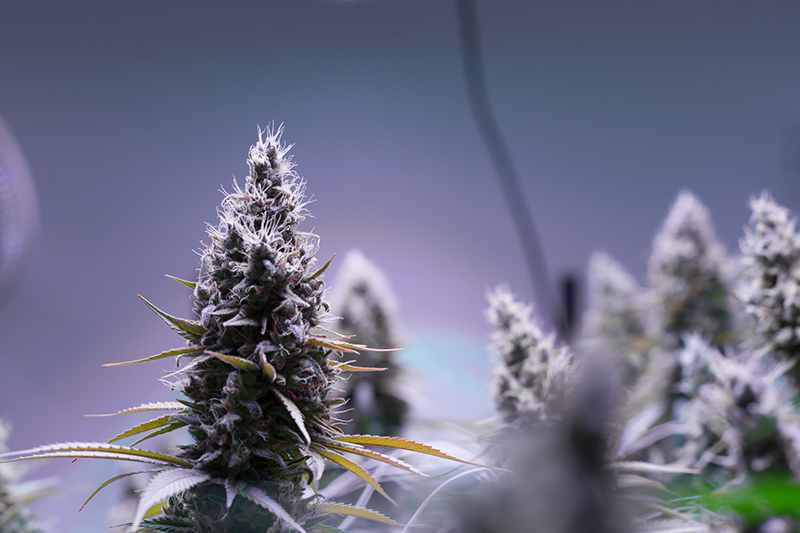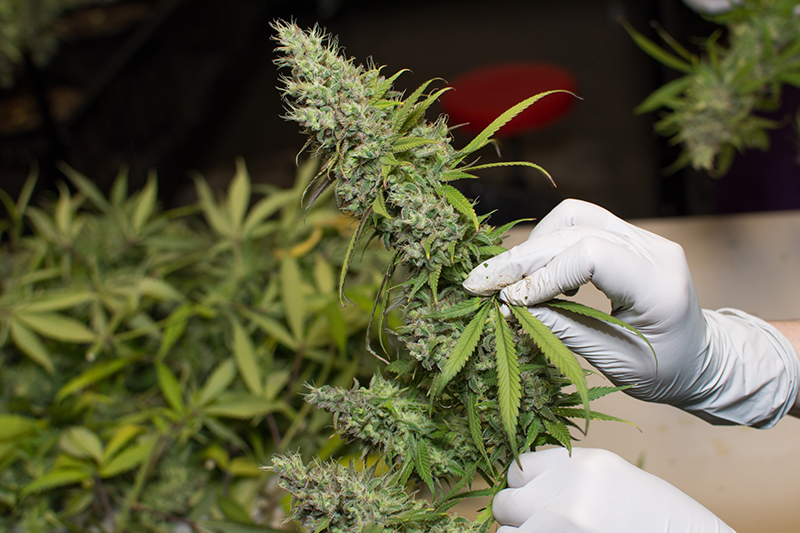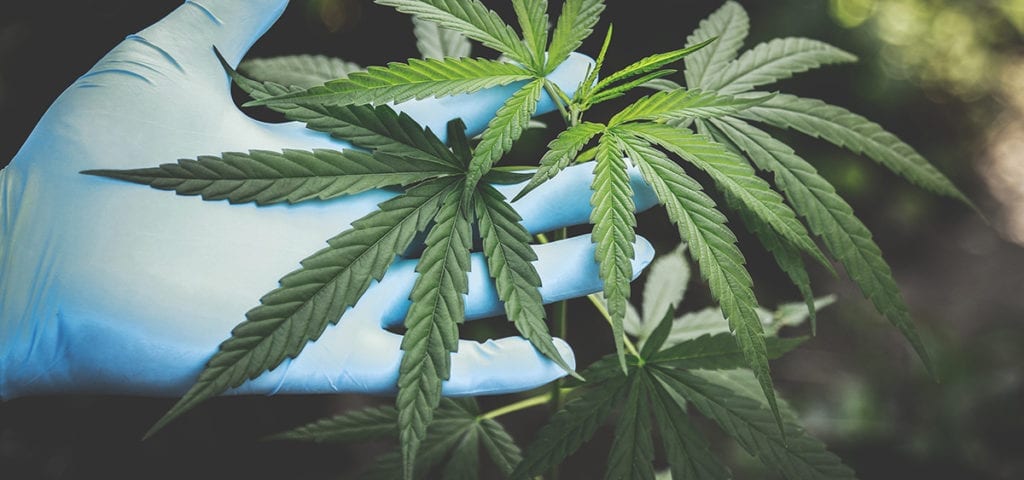It’s safe to assume that because they affect you differently, THC vs. CBD work differently in the brain. Tetrahydrocannabinol, or THC, is the main psychoactive compound in cannabis. The THC content in cannabis has increased drastically over the years — in the ’70s, the supposed “golden age” for drug use, THC content was estimated around 3-5% in cannabis. Now, it’s normal to see percentages of around 20% and even 30% on dispensary shelves.
This means the cannabis being consumed now is more potent than it once was, so knowing how these compounds affect us is increasingly important.
THC and the Endocannabinoid System
THC activates cannabinoid receptors in the brain and body, specifically CB1 and CB2 receptors. These receptors are part of a network called the endocannabinoid system, which was discovered by researchers in 1988.
There are many regions of the brain where cannabinoid receptors exist (they are also present in certain peripheral organs involved in pain responses and immunity). There are CB1 receptors in the hypothalamus (hormone release), frontal cortex (executive decision making/judgment), hippocampus (memory), amygdala (basic physiological processes like heart rate/breathing), and a region of the brain encompassing many structures, called the basal ganglia (movement/cognition). This illustrates why THC has such a multitude of behavioral effects and can vary widely among individuals.

CBD’s Various Mechanisms
CBD, on the other hand, has a low binding affinity for CB1 and CB2 receptors but acts by modulating other non-cannabinoid receptors in the body and brain. One of the receptors it acts on is the 5-HT species, which is involved in serotonin release. This could contribute to CBD’s anxiolytic effects.
CBD also blocks fatty amyloid acid hydrogenase (FAAH). FAAH is an enzyme responsible for the breakdown of anandamide, a cannabinoid our body naturally makes that activates the endocannabinoid system. Interestingly, the word anandamide originates from the Sanskrit word for bliss — CBD blocks FAAH from breaking down anandamide, which could be another reason CBD helps with anxiety.
CBD also stimulates the release of another endocannabinoid, 2-AG, which is responsible for modulating immune responses and activates both CB1 and CB2 receptors. This is how CBD indirectly activates cannabinoid receptors—it doesn’t bind directly to them but sends out signals for other molecules to be released that will stimulate the endocannabinoid system. In addition to these mechanisms, CBD has been seen to act as an antioxidant and contributes to neuroprotection and pain relief (both THC and CBD also modulate opioid receptor expression).
Different Metabolites and Mechanisms
When taken orally, THC is converted into a much more potent metabolite called 11-OH-THC. This is one of the reasons why when you take edibles, it not only takes longer for the high to hit, but you frequently feel the high much more intensely than if you had smoked.
In contrast, CBD allosterically inhibits cytochrome-P450 receptors. The P450 receptors are a specific subset of liver enzymes that break down compounds in the body. When CBD interferes and these enzymes are unable to do their job, you could end up with exceedingly high levels of a compound in your blood (say THC, for example, if you smoked a cannabis strain that had high percentages of both THC and CBD). This is one reason why it is crucial to learn how these compounds act in our body and interact with other substances we may be taking (if you’re on SSRI’s or blood thinners, taking high doses of CBD may not be a good idea because of its ability to block enzymatic breakdown).

The Entourage Effect and Synergy
Together, THC and CBD work synergistically to create the many benefits cannabis has been shown to offer: reducing anxiety, pain, and nausea — and helping restore sleep and appetite — to name a few of the major ones. The entourage effect is the name of this theory, stating that the compounds in cannabis work together to heighten the plant’s many benefits compared to when any of its individual compounds are consumed alone.
CBD specifically aids in dampening the powerful psychoactive effects of THC by opposing its action at the CB receptor. This blunts some of the potential negative effects of consuming THC, like paranoia and cognitive issues. Also, because THC is a lipid molecule, it binds to fat molecules in our body, which is why it can be seen in drug tests even months after consumption. This phenomenon, called depot binding, may help CBD be even more active when consumed with THC.
THC and CBD activate different receptors in our body and therefore have different effects when consumed. However, it’s in their synergy where they bring out the best in each other.
Get daily cannabis industry news and insights. Subscribe
End
